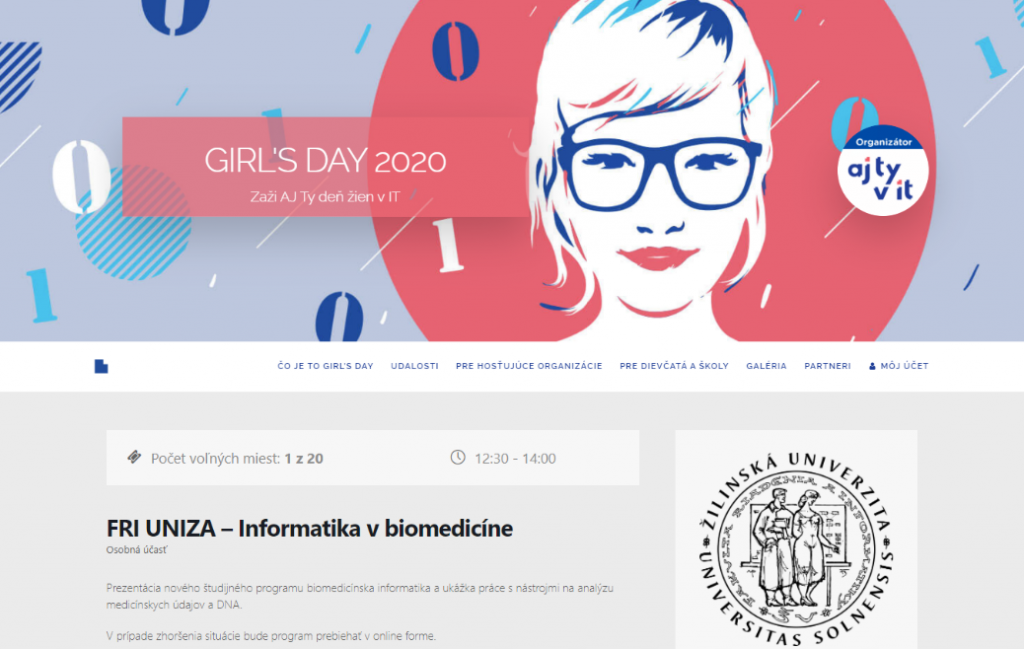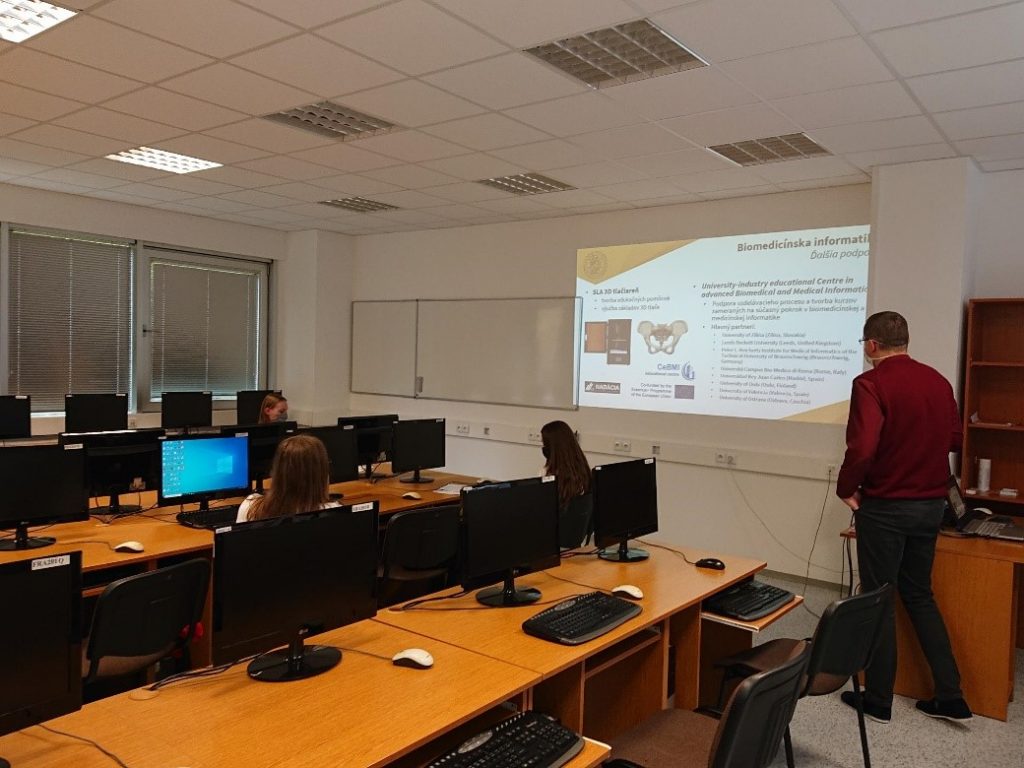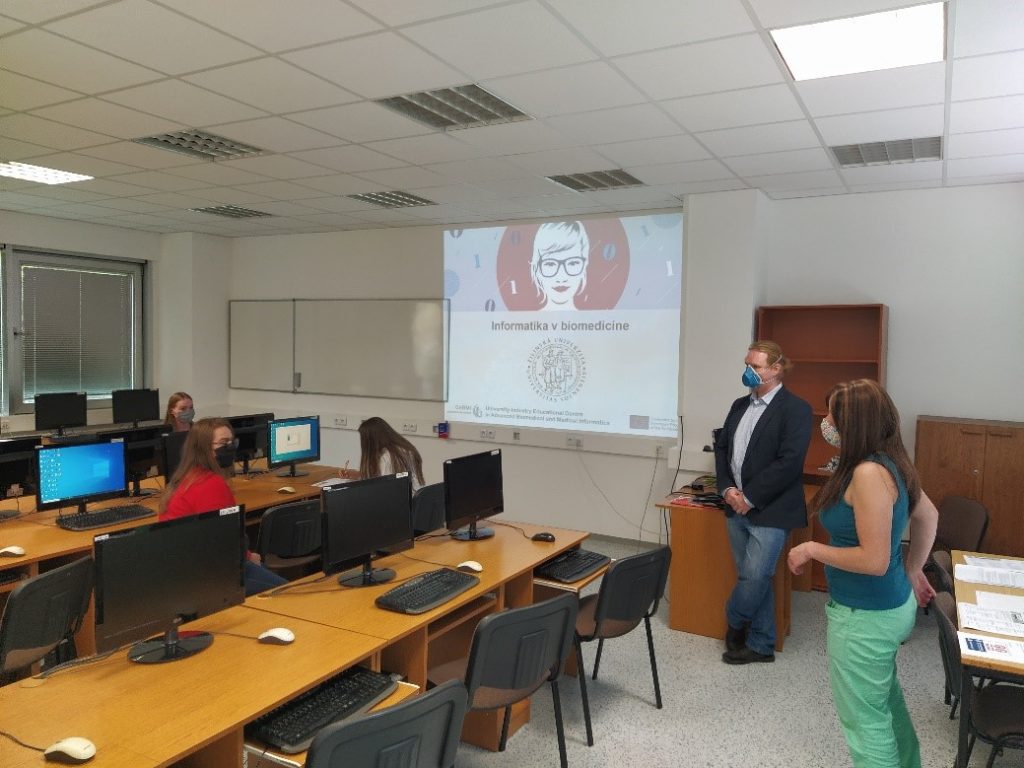In October 8th, the team from University of Zilina prepared a workshop on applications of informatics in biomedicine within worldwide event Girl’s Day 2020 promoting study of informatics among girls and women. Originally, 19 girls from Zilina city and its surrounding should participate in the workshop. However, due to current situation regarding the coronavirus, only 7 girls came to participate in the face-to-face meeting organized at the Faculty of Management Science and Informatics of University of Zilina. The other persons interested in the topic of the workshop can use a telepresence system from Google to participate online. Short information about the workshop organization was presented at the webpage of Girls’ Day event at url: https://girlsday.sk/events/fri-informatika_biomedicine/

The workshop was divided into two parts. The first part focuses on introducing the new study program on biomedical informatics opened at the Faculty of Management Science and Informatics. M. Kvassay presented the position of this study program among existing study programs in Slovakia. He emphasized its uniqueness in terms of combination of informatics, medicine and biomedicine. M. Kvassay also presented the key skills and knowledge of graduates of this study program and characterized its main courses. During the presentation, he also mentioned current projects supporting this study program. The first of them is “3D printing in biomedical informatics” supported by the Tatra banka Foundation. This project focuses on preparation of teaching equipment by their computer modeling and printing on a 3D printer obtained from the project. The second one is the CeBMI project, which focuses on development of the international centre of biomedical and medical informatics. After the presentation, discussion about employment of graduates was led.

In the second part of the workshop, J. Kostolny presented application of informatics in analysis of biomedical data. His presentation dealt with sequencing of DNA and comparison of DNA sequences using existing software tools. After explanation of this problematic, he taught the participants of the workshop how these tools can be used in analysis of DNA to determine paternity and which principles are behind paternity blood test. Participants had many interesting questions during the practical examples, and we hope their answering allows them to grasp the knowledge about the presented problematic.

